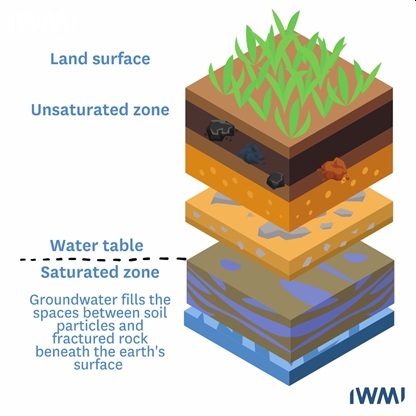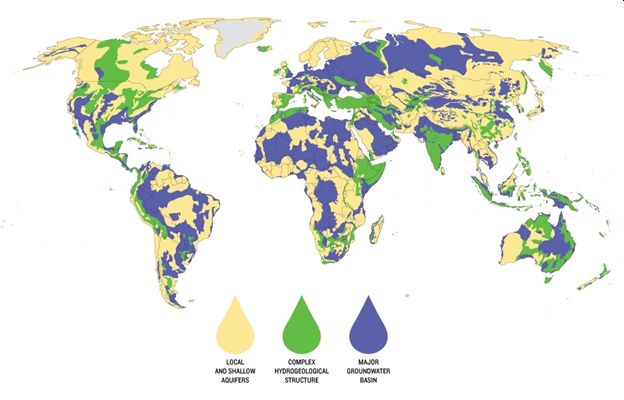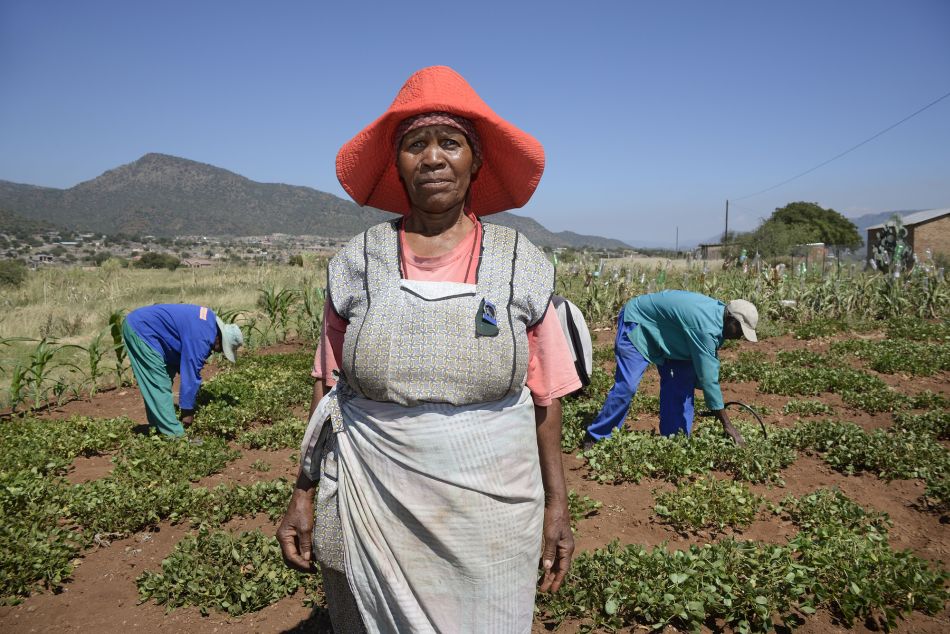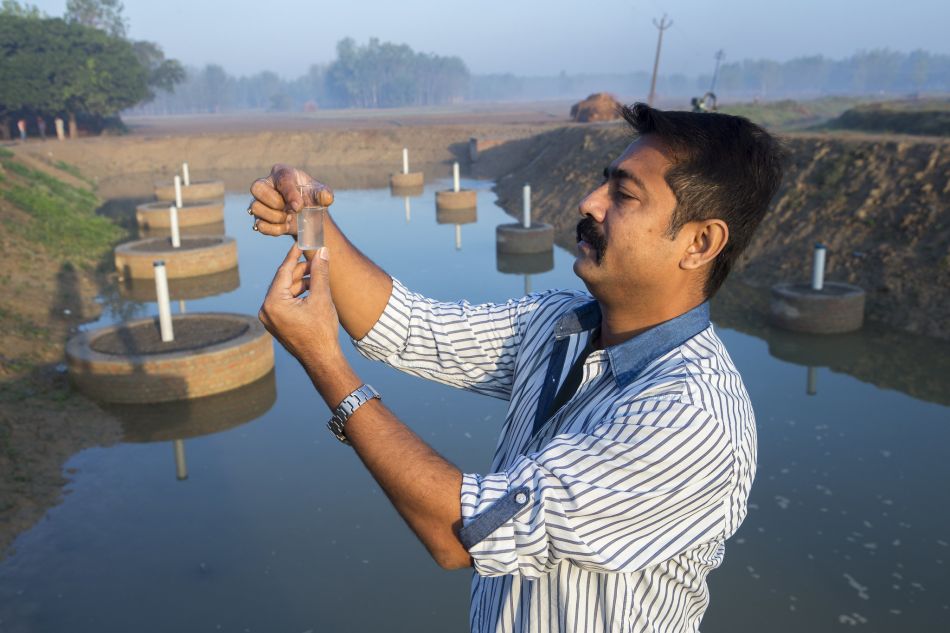By Isis Palay, Consultant
Scientists believe groundwater represents 99% of our planet’s unfrozen freshwater, and it is estimated that there is more than a hundred times more water in the ground than in all lakes and rivers. Yet our knowledge of this resource is limited compared to what we know about surface water.
To better understand and more sustainably manage groundwater, researchers at the International Water Management Institute adopt interdisciplinary approaches to devise holistic solutions for the billions of people who depend on groundwater for survival, and for the millions of people who could benefit from the sustainable development of this crucial resource.
The challenge
Groundwater is stored in the pores and cracks of underground rocks and sediments. Because climate and geology are complex to model, it is often difficult for hydrologists to assess the amount of groundwater contained in a specific aquifer. Monitoring groundwater levels across time can also prove complicated. Still, groundwater research is crucial — aquifers’ potential can only be sustainably exploited through informed practices.

The untapped potential of groundwater

Today, a great majority of global farmlands are rainfed. Rainfed agriculture produces much of the food consumed across the planet. But rainfed systems are not only less productive than irrigated farmlands, they are also more vulnerable to extreme weather events and climate change.
For millions of farmers, groundwater has the potential to add a layer of protection and insurance against the unpredictability of local weather patterns and to enable year-round crop production. However, as groundwater use soars, unsustainable pumping practices for irrigation, industry, and urban development are becoming commonplace. Pollution threatens groundwater supplies as well.
However, in certain areas that are not already overexploited, groundwater — if managed sustainably — could lift millions out of poverty. In alignment with its vision for a water-secure world, IWMI works to ensure the sustainable use of groundwater in developing countries by providing the necessary tools and knowledge to decision-makers and local groundwater users.
How do we do it?
IWMI facilitates the creation of sustainable groundwater management practices through a variety of approaches and dozens of field research projects. One strategy has been to propose the development of comprehensive and coherent groundwater management policies, especially in situations where groundwater is being shared across administrative boundaries.
Through the GRIPP (Groundwater Solutions Initiative for Policy and Practice) global network, for example, IWMI is coordinating 30 international groundwater institutions in collectively building capacity and knowledge, with the goal of finding scalable solutions to the world’s groundwater challenges.
For example, in the Limpopo basin, the USAID-funded RAMOTSWA Project improved the governance of the Ramotswa aquifer, which spans the borders of Botswana and South Africa. As part of this, a Transboundary Diagnostic Analysis (TDA) and a Joint Strategic Action Plan (JSAP) for the aquifer area were developed, which keeps guiding investments to address critical issues related to the aquifer.
With persistent droughts and unusable flush toilets in the area, shared groundwater resources are commonly contaminated by local human waste leakages. But the rehabilitation of sanitation systems, improvement of recycling practices, and restoration of local aquifers resulted in improved access to clean groundwater across the two countries. The RAMOTSWA Project also helped farmers increase their yields through more efficient irrigation practices, and save groundwater, energy and fertilizer, showing how science and local stakeholder involvement have guided real progress on the ground.
In the Tuli Karoo aquifer area, IWMI researchers led a pilot study that is now under expansion to cover 58 additional locations. Introduced in this focused study, IWMI scientists’ monitoring system continues to allow farmers to gauge their groundwater levels and their prospects for short and long-term irrigation. Armed with this knowledge, local farmers are now able to better prepare for droughts and increase their resilience to extreme weather events.
By paving the way with pilot studies on local issues and identifying priority solutions, IWMI provides local decision-makers with valuable information on systemic challenges. The GRIPP network’s support for these projects also ensures that the lessons learned are shared amongst all partners, to instigate institutional changes across broader and diverse contexts.

Lessons learned from Asia
In addition to creating scalable scientific knowledge concerning groundwater, IWMI experts try to better understand how environmental and socioeconomic contexts can shape each other. In South Asia, for example, our goal has been to build capacity for local communities to implement groundwater-based natural infrastructure.
Through the GRIPP network, IWMI teams have also studied managed aquifer recharge (MAR), or ‘groundwater replenishment,’ in India. In the Ganges Basin, for example, IWMI tested the ‘Underground Transfer of Floods’ technique to recharge aquifers with wet seasons’ runoff and improve water security during dry spells and droughts. Monsoonal flows were diverted to irrigation canals, leading to ‘recharge wells’ where water infiltrated into the ground. Since then, local communities have noticed significant benefits and have been increasingly accepting of this practice. Systems are now partly managed by villagers who have taken ownership of the technique.
Meanwhile, in Vietnam’s central highlands, a hotspot for Rubusta coffee production, farmers have been relying on groundwater to maintain high yields and make a profit. This has caused the steady depletion of groundwater resources, and farmers are now finding themselves in the midst of a ‘tragedy of the commons’ scenario. In response to this issue, IWMI and partners have set up facilities to capture and store local runoff to be stored underground. Assessments by IWMI researchers have shown that contrary to local beliefs, excessive watering was not necessary to increase coffee yields. With this evidence in hand, IWMI experts have been able to show local farmers that with smarter water management practices, ‘more coffee crop with less water’ is a strategy they can and should pursue.

By putting groundwater at the heart of our work, IWMI researchers are paving the way for further climate adaptation and resilience. For each project, the extensive documentation IWMI produces lays a foundation for better policy and practice. Today, with studies from all around the world, IWMI continues to fill scientific blind spots by focusing on sustainable groundwater management in marginalized communities — thus making the invisible visible in more ways than one.
















